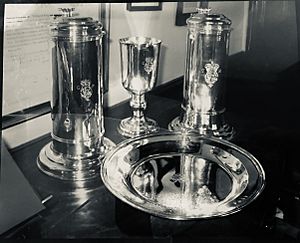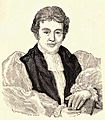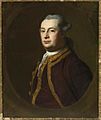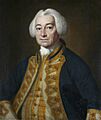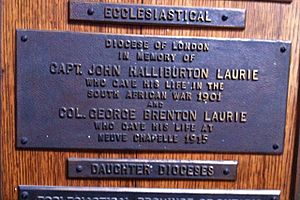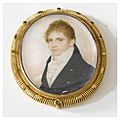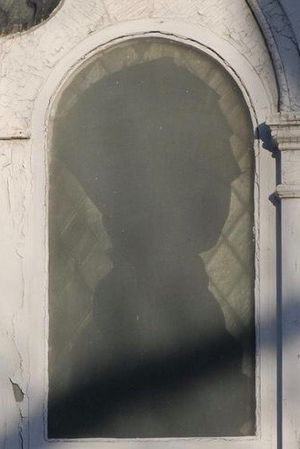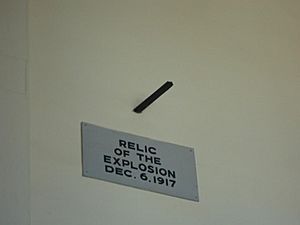St. Paul's Church (Halifax, Nova Scotia) facts for kids
Quick facts for kids St Paul's Church |
|
|---|---|
| St Paul's in the Grand Parade | |
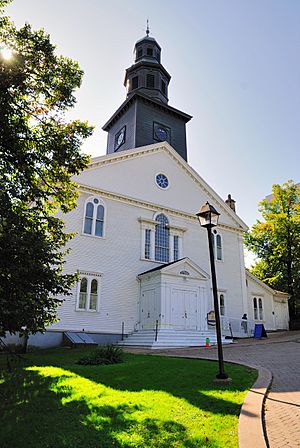
St Paul's Church
|
|
| 44°38′51″N 63°34′29″W / 44.64750°N 63.57472°W | |
| Location | 1749 Argyle Street Halifax, Nova Scotia B3J 3K4 |
| Country | Canada |
| Denomination | Anglican |
| Churchmanship | Anglican Church of Canada |
| History | |
| Founded | 13 June 1750 |
| Architecture | |
| Architect(s) | James Gibbs |
| Architectural type | Georgian |
| Completed | 2 September 1750 |
| Official name: St. Paul's Anglican Church National Historic Site of Canada | |
| Designated: | 1981 |
| Type: | Provincially Registered Property |
| Designated: | 7 November 1983 |
| Reference #: | 00PNS0006 |
St. Paul's Church is an old and important Anglican church in downtown Halifax, Nova Scotia. It's part of the Anglican Church of Canada. You can find it at the south end of the Grand Parade, a big open square in downtown Halifax. The Halifax City Hall is at the other end of the square.
The church's design is based on the Marybone Chapel in London, England. That chapel was designed by James Gibbs, who also designed St Martin-in-the-Fields in Trafalgar Square.
St. Paul's Church was built during a time of conflict called Father Le Loutre's War. It is the oldest surviving Protestant church in Canada. It is also the oldest building in Halifax. There is a crypt (an underground room) beneath the church. Nearby, you can find the St. Paul's Church Cemetery. The Little Dutch (Deutsch) Church was once a chapel for St. Paul's.
In 1981, St. Paul's was named a National Historic Site of Canada. This means it's a very important place in Canadian history. It was also recognized as a heritage property by the city of Halifax and the province of Nova Scotia.
Contents
A Look Back: History of St. Paul's
St. Paul's Church was started in 1749, the same year the Halifax colony was founded. Construction began in 1750. Its design was inspired by Gibbs' Marybone Chapel in London. Later, a larger tower was added.
The Reverend William Tutty opened the church on September 2, 1750. He was the first minister, serving from 1750 to 1754. Other early ministers included Rev. John Breynton and Rev. Thomas Wood. The church also hosted the first services for St. Matthew's United Church (Halifax) before their own building was ready.
Important Burials and Events
During the French and Indian War (also known as the Seven Years' War in North America), two important Nova Scotians were buried here: Governor Charles Lawrence (who died in 1760) and Catholic Priest Pierre Maillard (who died in 1762). Many Mi'kmaq people attended Maillard's funeral. Also during this war, Horatio Gates got married here in 1754. After the war, Vice-Admiral Philip Durell was buried here. He had been part of important battles like the Siege of Louisbourg (1758) and the Siege of Quebec (1759).
During the American Revolution, several funerals were held at the church. These included Francis McLean, who defended New Ireland (Maine); Captain Henry Francis Evans, who died in a naval battle; Baron Oberst Franz Carl Erdmann von Seitz, a commander of Hessian soldiers; and Governor Michael Francklin. Many Mi'kmaq people also attended Francklin's funeral.
After the American Revolution, the Diocese of Nova Scotia was created in 1787. St. Paul's became the first Anglican cathedral (the main church for a bishop) outside of Great Britain. It served as the cathedral from 1787 to 1864. For many years, it was one of the only places of worship in Halifax, so other religious groups also used the building for their services.
The Halifax Explosion's Impact
During the terrible Halifax Explosion in 1917, a piece of wooden window frame from another building was blasted into the wall of St. Paul's Church. It is still there today as a reminder of that event.
Special Memorials and Art
Honoring Important People
Many monuments inside St. Paul's Church honor important men and women from history. These memorials tell stories of leaders, military officers, and people who helped shape Nova Scotia.
-
Lt.-Col. John James Snodgrass, fought in Battle of Waterloo
-
Lt. Gov. John Wentworth
-
Dr. David Rowlands' wife Esther Rowlands
-
Suffragist Eliza Ritchie and Sisters windows
The Queen Anne Silver Service
The church has a special silver communion service. It was originally made up of five pieces. Four pieces have the mark of King George I. Two of these also have the mark of Queen Anne and are dated 1713. The fifth piece was damaged and melted down around 1819. All the pieces are made from a special type of silver called Britannia silver. In 1783, Governor Parr gave this service to St. Paul's.
The silversmith who made these pieces was Francis Garthorne. His work is displayed in famous museums like the Metropolitan Museum of Art in New York City. He also created five of the ceremonial maces (staffs) that are now in the Tower of London.
Beautiful Sculptures
Some of the monuments in the church feature sculptures by famous English artists from the 1800s. These sculptors had their work shown at the Royal Academy of Arts and can be found in places like the National Portrait Gallery and Westminster Abbey.
There are two stone carvings by Samuel Nixon. One shows a shipwreck, and the other shows the Parable of the Good Samaritan. Nixon was known for his "artistic genius."
Another sculpture was made by Sir Francis Leggatt Chantrey. His famous works include statues of kings like King George IV in Trafalgar Square.
You can also see a sculpture by Richard Westmacott III. He created the front of the Royal Exchange in London.
Other sculptures in the church include one by John Gibson and a monument by William F. Woodington. Woodington's work can be seen on Westminster Bridge and Nelson's Column.
-
Monument by Richard Westmacott III (for Sampson Salter Blowers)
-
Shipwreck by Samuel Nixon
-
Parable of the Good Samaritan by Samuel Nixon
-
Monument by Sir Francis Leggatt Chantrey
Past Ministers
Many ministers have served St. Paul's Church over the centuries. Here are some of the early ones:
- Rev. William Tutty (1749–1752)
- Rev. Jean-Baptiste Moreau (clergyman) (1750–1753)
- Rev. Thomas Wood (1752–1764)
- Rev. John Breynton (1753–1791), the first Rector
- Charles Inglis, the first Bishop of Nova Scotia (1781)
- Rev. Robert Stanser (1791–1816), the second Bishop
- Rev. John Inglis (1816–1824), the third Bishop
- Rev. William Cogswell (minister) (1833–1847)
- Rev. Robert Willis (minister) (1824–1865)
The Crypt and Commemorations
The crypt under the church holds the remains of 20 people. Many others are remembered through plaques, special banners called hatchments, or stained-glass windows.
Founders of Halifax
Some of the first important people in Halifax are remembered here:
-
Charles Lawrence, first person buried in the crypt
-
Plaque for Edward Cornwallis, Richard Bulkeley, William Nesbitt
American Revolution Era
People involved in the American Revolution are also remembered:
-
Francis McLean – defended New Ireland (Maine)
-
Baron Oberst Franz Carl Erdmann von Seitz Hatchment, a Hessian Commander
-
Lord Charles Montagu, Governor of South Carolina
- Lieutenant General William Neville Gardiner, who fought in the Philadelphia campaign (1777).
Later Conflicts
- French Revolutionary Wars (1792–1802):
-
John Wentworth, Governor of Nova Scotia
- Napoleonic Wars (1803–1815):
-
Gravestone for two crew members from HMS Shannon
-
Dr. David Rowlands' wife Esther Rowlands Monument
* Lt. Col. Peter Waterhouse (military officer), who fought in the Battle of Corunna. * Lieutenant-Colonel John James Snodgrass, who fought in the Battle of Waterloo.
- Second Boer War:
* Stanley Banfield * Capt. John Halliburton Laurie
- World War I:
Important Families Connected to the Church
The Uniacke Family
The Richard John Uniacke family is featured on many plaques and monuments.
The Almon Family
There are many memorials to the family of Dr. William James Almon. Four generations of doctors in this family had a big impact on medicine in Nova Scotia.
The Cogswell Family
The church has memorials for the family of Henry Hezekiah Cogswell. There are monuments for four of his children. His son, Rev. William, became a famous speaker and writer.
The Ritchie Family
The church also features memorials for the family of Hon. John William Ritchie. There are memorial windows for a son and five of his daughters. His twelve children donated money for a special window on the south side of the church.
-
Suffragist Eliza Ritchie and Sisters window
Notable Events at St. Paul's
Weddings
-
Horatio Gates married Elizabeth Phillips on October 20, 1754
Funerals
-
Catholic Priest Pierre Maillard's funeral was attended by many Mi'kmaq (1762)
-
Nova Scotia Governor Michael Francklin's funeral was attended by many Mi'kmaq (1782)
-
Funeral of John Winslow's brother Edward Winslow (1784)
-
Captain James Lawrence of USS Chesapeake (1813)
Royal Visits
St. Paul's has a special "royal pew" where many royal guests have sat. These visitors include Prince Edward (Queen Victoria's father), and later, Queen Elizabeth II and other members of the royal family. However, Prince George (who later became King George V) chose not to use the royal pew during his visits to Halifax in 1891.
-
Prince William Henry - later King William IV attended (1786)
-
Prince Edward attended (1794)
-
Prince Edward, later King Edward VII attended (1860)
-
George V (1891)
St. Paul's During the Halifax Explosion
St. Paul's Church played a very important role during the Halifax Explosion in 1917. Doctors used the church as an emergency hospital. They treated the injured in the two vestries (rooms used by clergy). The bodies of those who died were placed around the walls of the main part of the church, called the nave.
Only one stained glass window in the church was completely broken. However, most of the other windows were smashed, and there were large cracks in the roof. Even so, it was the only church in the city considered safe enough to hold a service the day after the explosion. All the different church groups in Halifax used St. Paul's to hold funerals for the victims.
Two special items from the disaster are still in the church today. One is the "Explosion Window." It shattered in a way that formed the silhouette (outline) of a man's head and shoulders. People believe this silhouette looks like Abbe Moreau, an early clergyman. The other item is a piece of a steel window frame that remains stuck in the wall of the vestibule (entrance area) above the inside doors of the church.
See also
- Little Dutch (Deutsch) Church
- St. Matthew's United Church (Halifax)
- St. John's Anglican Church (Lunenburg)
- List of oldest buildings and structures in Halifax, Nova Scotia
- History of the Halifax Regional Municipality
- History of Nova Scotia
- Military history of Nova Scotia
- List of oldest buildings in Canada


















